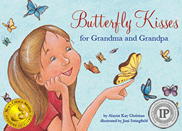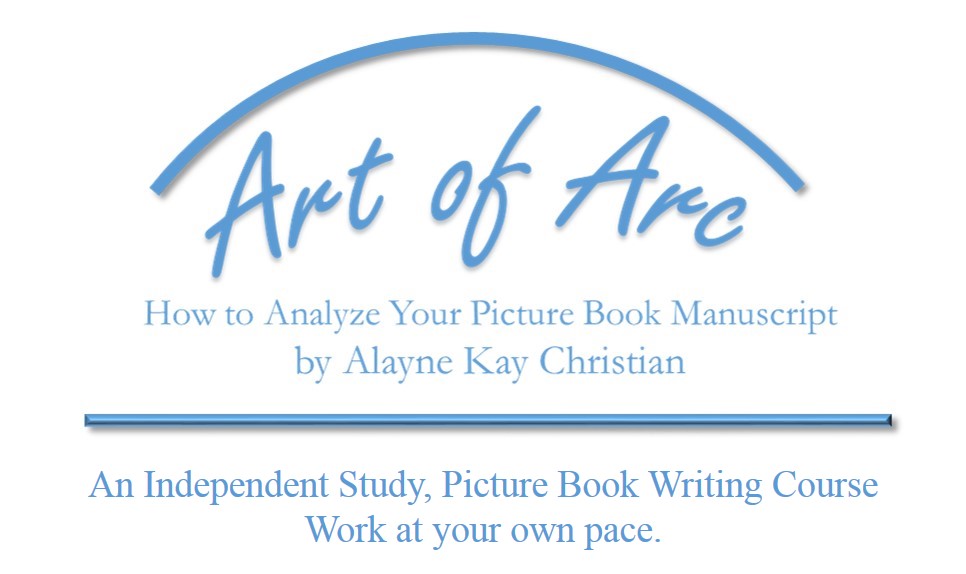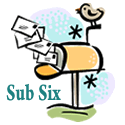
This month, I asked our wise authors to share thoughts on the importance of powerful first lines along with some tips for writing an outstanding beginning or outstanding first lines. I’m excited to share our many fabulous tips, examples, and mini-lessons. These tips can also be used for revising your stories’ beginnings, so you get double the treasure with these posts. Some authors have shared first lines of books in both Part 1 and Part 2. Study them and see if you can find some of the techniques mentioned in the two parts for this topic. Also notice if they inform you and draw you into the story–hook you. And if so, why? For those of you who are working on nonfiction picture books, Vivian Kirkfield’s first line examples and some of mine are from nonfiction picture books. However, they are good examples for works of fiction as well.
This is such an important topic that we will have three parts for this topic. This is part two, and you can read part one here.
WE HAVE A BONUS!

I will give away free access to my webinar HOW TO WRITE POWERFUL FIRST PAGES LIKE A PRO to one lucky winner. To enter for a chance to win, please comment on one of the three posts about writing outstanding beginnings and share the link on Twitter or FB. Please tag me when you share the link, so I can make sure I get your name in the drawing. Now for some great words of wisdom.

WELCOME READERS BY GIVING A PEEK INTO THE STORY WITH GREAT FIRST PAGES
I love the topic of tips for writing outstanding beginnings. For me, this ties into last month’s topic about why it’s important for kid lit writers to read a lot of books in their genre. I read picture books with a different eye each time I pick them up, and recently I have been focused on beginnings and endings because they are both so important.
The first few lines matter for several reasons.
Beginnings of books invite the reader in. It’s the place to welcome your readers, so you want to make it welcoming and give a hint of what’s to come.
As picture book writers, we don’t have “the real estate” to give a lot of background. We have a lot to say in only 32 pages! (actually more like 28 pages). We need to give the readers a peek into the book. Is it humorous? Serious? Light hearted? In a picture book with a traditional arc, we need to introduce the character, what that character wants, and what is standing in the way right off the bat.
But we also can’t just jump in to something that doesn’t make sense to the reader so there needs to be some background in the first few lines. We walk a very thin line!
Remember, all of that information doesn’t all have to be in the first line, but it definitely needs to be close to the beginning. And the lines need to be crafted to make the reader want to read on. I recently re-read Jacqueline Woodson’s EACH KINDNESS. Her fist page just tells us it’s snowy…hmm. However, the description of the snow was just a few words, but they kept me engaged and hinted at something that drew me into the story. (HOW you say things matter) By the second page, we know what the story is about. One more page turn, and we know what the conflict is. BOOM! So was ALL this info in the first two or three lines? No, but pretty close, and it worked! Each page beckoned me to turn the page, and there were not a lot of words on each page.
Even concept books should set up the tone and theme from the very beginning. Parents picking up a book for their little ones, have many options. They want something to grab them. Think about CHICKA CHICKA BOOM BOOM by Bill Martin Jr., John Archambault, and Lois Ehlert. The first time I read “A told B and B told C I’ll meet you at the top of the coconut tree,” I was hooked! I knew what it was about, I loved how unique it was, and it stood out from other alphabet books.
So how do writers do all this? It’s hard! I look up to many writer friends who are experts at awesome first lines.
For me, getting those first lines just right (and are they ever just right?) often takes loads of revision. I write my story first, knowing it’s going to go through multiple revisions before I’m even close to being happy with the beginning. I “wordsmith” the beginning as I go along, checking to make sure that the beginning, middle, and end still make sense together. I actually have a list of great first lines I’ve thought of. Of course, a list of first lines doesn’t make a story, but maybe someday they’ll appear in one. You never know!
Here are a few of my first lines that did make it into print.
A FLOOD OF KINDNESS:
The night the river jumped its banks, everything changed.
LOLA CAN’T LEAP:
Lola came from a long line of leapers. She wanted to leap too, but… (second page sets up the conflict)
DON’T EAT THE BLUEBONNETS (Co-written with Ellen Rothberg)
Sue Ellen had a mind of her own. When the other cows mooed, Sue Ellen Whistled. When the other cows strolled, Sue Ellen danced. And when Max put a sign in the South Pasture, Sue Ellen stomped her foot. (First two pages…the words on the sign sets up the conflict)
Happy reading and writing, everyone!
QUOTABLE QUOTES ON BEGINNINGS: ADVICE FROM SOME OF THE GREATS OF WRITING (plus a little extra from me)
To inspire myself when writing and revising, I often look to advice from some of the greats of writing. After all, I’m not the first person who has walked down the road of writing a story. And I’m certainly not the first who has tried to determine the best way to begin a story in hopes of capturing the attention of my audience. That struggle began millions of years ago when our ancestors orally shared tales around roaring fires.
Some seem to think that beginnings (and maybe writing in general) are easy. Lewis Carrol must have known a few folks like that when he said:
“Begin at the beginning and go on till you come to the end: then stop.” -Lewis Carroll
Carroll knew the process of writing was more complex than that, right? We have to remember the complexity of our craft, too. So, let’s back up and begin at the beginning. What is a beginning?
“The beginning is the promise of the end.” -Henry Ward Beecher
The beginning does not exist in isolation. It must be linked to what comes after it—the middle—and the beginning and the middle must lead to a satisfying conclusion. But be warned. You won’t nail the beginning in the beginning.
“Almost all good writing begins with terrible first efforts. You need to start somewhere.” -Anne Lamott
If Anne Lamott says it’s okay for my first efforts to be less-than stellar, that’s good enough for me. But I’m still left wondering what a beginning needs to accomplish. A beginning often (or nearly always) begins with the character, the character’s desire, the character’s problem, or the character’s situation.
“First find out what your hero wants, then just follow him!” -Ray Bradbury
To write about a character we have to know as much as possible about that character. We need to know what motivates the character, what makes them who they are. We need to know the story behind the story.
“Everything must have a beginning . . . and that beginning must be linked to something that went before.” -Mary Shelley
But be cautious—it seems that the biggest problem with beginnings is that they often get lost in back story. While back story is essential to the writer it is usually nonessential to the reader. Find the back story, then edit out as much as possible. Speaking of editing and revision, the beginning will change and grow and develop as the story does.
“By the time I’m nearing the end of a story, the first part will have been reread and altered and corrected at least one hundred and fifty times.” -Roald Dahl
Often it is only after you’ve finished a story (is a story ever finished?) that the beginning becomes clear.
“I write the beginning last.” -Richard Peck
Here’s the thing—we writers often overthink things. Maybe it’s because we spend a lot of time with in our own heads or because we spend so much time in front of a monitor or because we work again and again and again to find the just-right word. Sometimes, we can think so much that we don’t write. So, the best advice for beginnings might come from a race car driver.
“To finish first, you must first finish.” -Rick Mears
Or we could revise that a bit to say, “To finish, you must first begin.” Better yet, we might let a motivational speaker inspire us and our beginnings.
“You don’t have to be great to start, but you have to start to be great.” -Zig Ziglar
You have greatness inside you. You have stories inside you. You have beginnings inside you. Now, go on—begin!
OPENING LINES ARE HOW AN AUTHOR MAKES A STRONG FIRST IMPRESSION ON THE READER
I was always taught that first impressions are really important. You wear a new outfit on the first day of school. You give a firm handshake at a job interview. And in a manuscript, the opening lines are how the author makes a strong first impression on the reader. Opening lines are a doorway into the story – they give the reader a taste of what’s to come and they often set up the promise that will be fulfilled with the satisfying ending. I’m a big fan of concrete examples and so I’ll share a few of my favorite opening lines from some of my own stories – and also the closing lines that mirror them:
The Boys Who Dreamed of Flying: Opening Line: “At a time when most of the world believed human flight was impossible, one boy thought differently.”
Closing Line: “And it all started with Joseph and Etienne Montgolfier, two brothers, as different as could be, who worked together to take the first step in that starry direction.”
Black Forest or Bust: Opening Line: “Something had to be done. And Bertha Benz was tired of waiting for her husband to do it.”
Closing Line: “And in July of 2016, exactly 125 years after a determined young woman tiptoed past her sleeping husband to take her children on a visit to their grandmother’s house, Bertha Benz was inducted into the Automotive Hall of Fame in Dearborn, Michigan, in recognition of her invaluable contribution to the development and design of the modern automobile.”
Raye Draws Her Own Lines: Opening Line: “When Raye Montague was seven years old, she knew exactly what she wanted to be when she grew up.”
Closing Line: “The tour director had been right all those long years ago. Raye didn’t need to worry about becoming an engineer…she just went out and did it!”
Making Their Voices Heard: Opening Line: “Ella and Marilyn. On the outside, you couldn’t find two girls who looked more different. But on the inside, they were alike–full of hopes and dreams, and plans of what might be.”
Closing Line: “On the outside, these two stars couldn’t have looked more different. But on the inside, they both understood that sometimes even stars need a little help to shine.”
One of my favorite ways to get opening line inspiration for a new nonfiction picture book bio is to read some of my favorites…classics or current ones. I study how those authors crafted their opening lines. Then I go to my research and look for something that jumps out at me. It’s not a scientific way of doing it…but somehow, it works.
A MINI-LESSON IN WRITING GREAT BEGINNINGS
For me a great beginning should not only accomplish several important things all at once, but also do so smoothly and organically.
1. Introduce the main character so the reader knows immediately who to root for
Whenever I critique manuscripts, I often see stories that open with a secondary character speaking or “entering” the scene first, and that causes confusion. If I, as the reader, get on board and ready to see the world through the eyes of the first character I encounter only to find that that was not the star of the story, that creates disconnect as my focus was misplaced.
2. Give a sense of the character’s personality
This is where the reader forms a first impression about the main character and they must engage the audience with something interesting, unique, fresh, intriguing etc. about themselves.
3. Establish the premise.
This is very important — it’s the “promise” the story makes to the reader and it’s also what we would come back to to measure up against and see whether that promise has been fulfilled by the resolution.
4. Establish the tone.
There should be no confusion about that.
5. Evoke a strong desire to keep reading and find out more.
Say too much, and you might lose the reader. Say too little, and you might confuse the reader. Make it just right!
So, if your beginning hits all the marks above, you’re golden!
A FEW MORE FIRST LINES FROM MY BOOKS
AN OLD MAN AND HIS PENGUIN: How Dindim Made João Pereira de Souza an Honorary Penguin, illustrated by Milanka Reardon
“On an island off the coast of Brazil, a black blob bobbed on the beach. The tarry figure shimmered and squirmed in flowing sea foam. It squeaked. Joao squinted and moved closer.
Slippery.
Heavy.
Soaked with oil.
The penguin squiggled and wiggled. It could not stand.”
These first lines let you know who, what, and where.
Where: The story occurs on an island off the coast of the Brazil.
Who: João and a dying penguin (you learn the penguin’s name on the next page)
What: João discovers a dying penguin.
It also sets the tone or demonstrates the voice. It creates questions that make the reader want to turn the page. What will João do next? What will happen to the poor little penguin? The next pages connect the reader emotionally to both João and the penguin.
THE WEED THAT WOKE CHRSITMAS: The Mostly True Tale of the Toledo Christmas Weed, illustrated by Polina Gortman
“When Weed was a seed, it tumbled on a breeze and snuggled in a crack, smack-dab in the middle of a busy traffic island.
Spring rains showered, and Weed sprouted.
Summer sun warmed. Weed grew.
Cars zoomed. People zipped and scurried—always in a hurry.
But no one noticed Weed.”
We know this story is about a weed that wants to be noticed. We can tell the story is set in a big city. And we get a sense of the voice/tone. We are left wondering what will happen to weed. We build a slight emotional connection (especially anyone who can relate to longing to be “seen” in a big world too busy and unaware to see). In this book, the illustrations help tell the story and raise more interest when the reader sees that weed isn’t the only one going unnoticed. What about the homeless man and his dog who are seeking kindness?
BUTTERFLY KISSES FOR GRANDMA AND GRANDPA, illustrated by Joni Stingfield
“Emily loved staying at Grandma and Grandpa’s house. They let her eat sweets, stay up late, and jump on the bed. She could skip her bath, make lots of noise, and run in the house.
Grandma and Grandpa played with her, read her stories, and let her help in the garden.
Emily loved her time with Grandma and Grandpa except for one thing. . . .”
With these first lines the ellipsis is used as discussed in Part 1 on writing outstanding beginnings. This leaves the reader wondering what that “one thing” is, and it compels the reader to turn the page and keep reading–it pulls the reader forward into the story.
SIENNA, THE COWGIRL FAIRY: COWBOY TROUBLE, illustrated by Blake Marsee
“I was happier than a snake sunning on a woodpile when Aunt Rose asked me to be in her elegant wedding. I was sadder than a rodeo clown on a rainy day when I learned flower girls wear dresses and fancy shoes.”
This is the first paragraph of a chapter book. This book is book 2 in the Sienna, the Cowgirl Fairy series. So, there is a prologue written in the form of a letter from Sienna. Therefore, the reader has a sense of who, what, where and tone before they read this first paragraph. This first paragraph, informs the reader that this is a story about a girl who has a problem. Her Aunt Rose wants her to be in her elegant wedding, but that means wearing a dress and fancy shoes!
The last page in the chapter reveals Sienna’s fears. “I’d look mighty silly in a dress. I’d trip over my own feet in them fancy shoes. And I ain’t much good at manners neither.” We learn she is struggling with those fears but also the fear of of hurting Aunt Rose’s feelings and making her sad if she refuses to be a flower girl.
So, by the end of the chapter, the readers have been informed enough to pull them forward into the story.
MORE TO COME!
Next week Beth Anderson, Marcie Flinchum Atkins, and Michelle Nott will share their wisdom, tips, and even some worksheets for writing outstanding first lines.
Read Full Post »



































